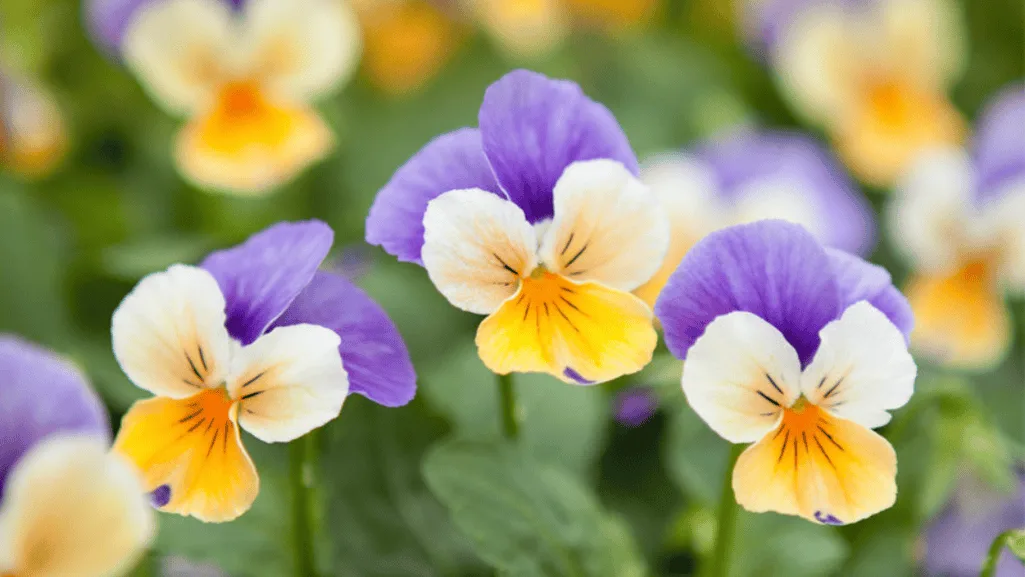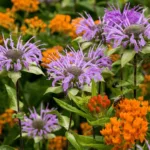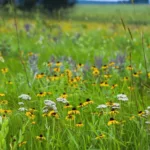
Beautiful flowers gardenia Plants For Your homes

Bring instant cool-season color to your yard with cheerful pansy flowers. Available in soft pastels and vivid brights, pansies perform best in cooler temperatures and tolerate light freezes and brief snow — perfect for planting when other plants are still dormant.
Want a bright pansy garden or a splash of color in a container? Pansies are user-friendly for new and experienced gardeners. With roots in 19th‑century breeding, modern pansies are easy to find at local nurseries and garden centers — an easy way to refresh beds in spring, fall, or even mild winter seasons.
 Introduction: The Enduring Allure of Pansy Flowers
Introduction: The Enduring Allure of Pansy FlowersThe beloved pansy flower (Viola x wittrockiana) combines classic charm with tough cool-season performance. Gardeners prize this plant for its bold face-like blooms, wide color range, and ability to brighten beds and containers when many summer flowers are still resting.
Quick care snapshot: pansies prefer cool temperatures, moist but well-drained soil, and at least 4–6 hours of sun (morning sun is ideal). They tolerate light spring frosts, making them a top choice for early-season color.
| CharacteristicDetail | |
| Colors | Purple, Yellow, White, Blue |
| Height | 6 to 9 inches |
| Fragrance | Subtle, Sweet (varies by cultivar) |
| Cool Weather Resilience | High |
| Symbolism | Happiness, Love, Remembrance |
| Growth Needs | Cool temperatures, moist well-drained soil, partial to full sunlight |
If you’re pressed for time, follow this Quick Start for healthy pansies: plant in cool soil (45–65°F), water when the top inch of soil dries, and feed with a balanced fertilizer every 2–3 weeks while actively growing. These simple steps support steady growth and continuous blooming.
Planting timelines (example):
Pansies are also excellent for pollinators — bees and butterflies visit the blooms, helping your garden’s biodiversity and overall health.
In short, the pansy is a versatile, cool-season favorite — easy to grow with basic plant care, and a quick way to add cheerful color to your garden. Download a printable care sheet to keep this Quick Start at hand.
 The Diverse Palette of Pansy Flower Colors
The Diverse Palette of Pansy Flower ColorsWatch this quick guide: Highlights: best color pairings for beds, choosing cool-season varieties, and container tips (skip ahead to 2:10 for color combos).
Pansy colors give gardeners fast, reliable color in cool weather — from soft violets to clear yellows and near‑black shades. These pansies are popular because breeders have created palettes to suit everything from formal beds to casual containers.
Traditional and modern pansy flower colors work well across climates — from cool, maritime gardens in the UK and northern Europe to temperate areas in North America. If you plan to cook with them, use only organically grown, pesticide‑free blooms; many edible pansies have a mild flavor that complements salads and desserts.
| Color VarietySeed Pack (example)Price (example)Seed Count | |||
| Cool Wave Morpho F1 | Cool Wave Series | $4.95 (example) | 10 seeds |
| ColorMax Lemon Splash | LET805 Series | $3.95 (example) | 25 seeds |
| Aalsmeer King Size Mix | LET827 Series | $3.95 (example) | 50 seeds |
| Golden Yellow F1 | Cool Wave | $4.95 (example) | 10 seeds |
| Fizzy Fruit Salad Mix | Mixed Varieties | Varied (example) | Mixture (varies) |
Pansies are flexible: decorative, edible (when grown without pesticides), and reliable in cool weather. Use the table above as an examples list — check the supplier page for current prices and seed counts before you buy.
Pansies trace their garden history back to the wild heartsease, Viola tricolor. Through selective breeding in the 18th and 19th centuries gardeners turned small wild violets into the showy, large‑flowered pansy hybrids we plant today. That long horticultural effort created the many pansy varieties—from delicate pastels to strong, dramatic colors—that gardeners still choose for cool seasons.
Early breeders selected for larger blooms, stronger colors, and more upright growth. Over time, breeders introduced named series and hybrids to suit specific uses—trailing forms for hanging baskets, compact types for borders, and large‑flowered cultivars for dramatic displays. These advances turned pansies into one of the most versatile cool‑season plants.
The story of pansy breeding involves many horticulturists and amateur gardeners across Europe. Their work produced the wide array of hybrids and garden forms that thrive in different climates and seasons. For readers interested in deeper history, consult horticultural archives or extension publications for primary references.
| CharacteristicDescription | |
| Chromosome Number | 2n = 44–52 (commonly reported as 48 in many cultivated lines) |
| Typical Growth | Most garden types reach roughly 15–23 cm (6–9 in); flower diameter varies widely by cultivar |
| Color Range | Yellow, gold, orange, purple, violet, red, white, and near-black shades |
| Temperature Tolerance | Many cultivars are winter‑hardy in zones 4–8; heat tolerance is limited—select appropriate varieties for hot climates |
| Cultural Notes | Bred extensively since the 19th century — many hybrids and series now available to gardeners |
Overall, the pansy demonstrates adaptability across many climates and garden uses. From the wild viola tricolor to today’s colorful hybrids, pansies remain a reliable choice for cool-season interest and creative planting schemes.
 Understanding Pansy Varieties and Their Characteristics
Understanding Pansy Varieties and Their CharacteristicsPansies belong to the Viola genus and include a broad range of variety types — from classic “monkey face” patterns to clear single colors. Breeders have created series tailored for different garden uses: compact bedding types, large-flowered showy cultivars, trailing forms for containers, and hardy lines that perform in cool seasons.
Below is a quick-reference guide to common types — use it to choose the right pansy variety for beds, borders, or pots.
| TypeCharacteristicsBest Use | ||
| Standard bedding (Viola x wittrockiana) | Large, showy flowers; many color options | Mass plantings, borders, show displays |
| Trailing / Cool Wave | Spreading habit, excellent for hanging baskets | Hanging baskets, mixed containers |
| Large-flowered (e.g., Colossus) | Very large blooms — high visual impact | Feature pots, focal points in beds |
| Perennial/violas | Smaller, longer-lived in mild climates | Rock gardens, long-term groundcover in mild zones |
Recommended combos: pair large‑flowered ‘Colossus’ with early tulip bulbs for bold spring contrast; use Cool Wave trailing pansies in hanging baskets with fine-leaved grasses for texture. For cold-hardiness, choose varieties bred for your USDA zone — consult the plant tag or supplier notes.
Whether you prefer showy bedding plants, dependable annuals for seasonal displays, or long-lived perennials in mild climates, the many pansies and violas available give gardeners flexible options to match site, season, and design.
Beyond their garden value, pansies carry a surprising amount of cultural meaning. Different colors and historical uses have given the pansy flower symbolic roles in art, literature, and human rituals.
| ColorCommon MeaningTypical Uses | ||
| Purple pansies | Royalty, admiration | Formal bouquets, tribute plantings |
| Yellow | Happiness, thoughtful remembrance | Bright borders, cheerful garnishes |
| White | Purity, new beginnings | Wedding accents, clean palettes |
| Red | Deep love, passion | Romantic floral notes |
| Blue / violet | Trust, calm, reflection | Sympathy arrangements, contemplative gardens |
These associations are culturally rooted and can vary by region; use them as guides when selecting pansies for events or themed beds.
Pansies appear across literature and customs. Shakespeare references pansies in A Midsummer Night’s Dream as “love‑in‑idleness,” linking the flower with love and enchantment (see Act 2, Scene 1). In Victorian floriography, pansies were symbols of thought and remembrance — gardeners and lovers exchanged them to convey private sentiments.
Across Europe, pansies have been included in bridal bouquets and remembrance ceremonies — often chosen for their modest size, clear colors, and the emotional notes these colors carry. If you plan to use pansies in arrangements, consider the color meaning and the message you wish to send.
Quick idea: use white pansies with soft greenery for a “new beginnings” bouquet, or pair purple pansies with dark foliage for a dignified sympathy arrangement.
Planting pansies successfully starts with the right site and soil. Below is a compact planting checklist and an easy “how to plant” micro‑guide so you can get pansies off to a strong start.
Keep soil evenly moist but not waterlogged. In active growth, a balanced fertilizer every 2–3 weeks helps sustain blooming; choose a formula that supports flowers (moderate nitrogen, higher phosphorus/potassium) and follow label rates.
Avoid overcrowding — 6–12 in spacing allows airflow to reduce mildew and rot. If disease appears, remove affected leaves and rotate beds the following season.
Follow this planting and positioning plan and your pansies will establish quickly and reward you with steady growth and color through the cool seasons.
 Pansy Flower Care: Ensuring Vibrant Growth
Pansy Flower Care: Ensuring Vibrant GrowthGood pansy care is about steady attention: even moisture, proper feeding, timely pruning, and protection from extremes. Below are practical, easy-to-follow tips to keep your pansies healthy and blooming.
Keep the soil consistently moist but not waterlogged. Water at the base to avoid wetting foliage and reduce disease. In containers, check moisture every few days — hanging baskets dry fastest.
A loose, well-draining mix with added compost is ideal. For containers use a premium potting mix; add a small amount of kelp or bone meal at planting to support roots and flowering. Avoid heavy, compacted soils that hold water at the roots.
Watch for common pests — slugs, snails, and aphids — and address them early. Use handpicking, beer traps, diatomaceous earth, or insecticidal soap as needed. Provide mulch to moderate soil temperature and protect roots in cold weather.
Regular deadheading (removing spent flowers) encourages continuous blooming. Trim leggy growth to maintain a compact shape. In mild climates, some pansy types behave like short‑lived perennials and may return for multiple seasons.
Small patio pot (10 in): 12 standard pansies, premium potting mix, slow‑release fertilizer; water every 2–3 days in warm weather. Large mixed planter (18 in): 8 vigorous violas or trailing Cool Wave pansies, add 2-3 companion annuals (e.g., nemesia), use mulch and check moisture daily in summer.
| ConditionRequirement | |
| Temperature | Best between 45–65°F; tolerates light freezes (cultivar dependent) |
| Watering | Keep evenly moist; containers need more frequent checks |
| Fertilizer | Balanced feed every 2–3 weeks during active growth |
With routine care—consistent moisture, moderate feeding, and prompt pest control—pansies reward gardeners with abundant blooms across the cool seasons. If you’d like, I can craft printable care cards or container planting templates to match the container recipes above.
With the right variety and care, pansies can carry your garden from a grey winter into a colorful spring. Understanding seasonality—when to plant and how to protect—lets you extend bloom times and enjoy pansies across multiple seasons.
In cooler climates, winter pansies are a reliable source of color. They prefer soil around 45–65°F (7–18°C) and benefit from morning sun and afternoon protection in warmer regions. Mulch helps moderate soil temperature and conserve moisture.
Many pansy cultivars are bred for cold tolerance and can bloom through mild winters. In favorable zones, they may persist for several months; exact longevity depends on variety and local conditions. Provide at least 4 hours of sun and a layer of organic mulch for best winter performance.
Learn more about local season timing and cultivar selection to maximize winter and early spring color.
As temperatures rise, refresh displays by deadheading and easing watering to avoid stress. Replace tired winter pansies with heat‑tolerant summer annuals or move pots to cooler, shaded spots to extend visual interest.
 The Culinary and Artistic Uses of Pansy Flowers
The Culinary and Artistic Uses of Pansy FlowersEdible pansies are a simple way to add visual flair to salads, desserts, and cocktails. Always use flowers grown organically and rinse before use. Their mild flavor enhances presentation more than taste — they are primarily a colorful garnish.
Dry or press petals for cards and framed art, or float fresh blooms in a shallow bowl as a spring centerpiece. Their flat faces and variety of colors make them especially craft‑friendly.
Pansies give gardeners a broad toolkit: striking color, edible garnish options, cultural meaning, and adaptable growth habits. For best results, start with good soil, choose varieties suited to your climate, and follow season‑aware care practices — then enjoy the cheerful displays from winter through spring.
Want a quick reference? Download our printable seasonal planting calendar or sign up for variety recommendations tailored to your USDA zone.
Plant in early spring or fall when soil is cool; in mild areas, fall plantings give strong winter and early spring color.
A balanced feed every 2–3 weeks during active growth keeps pansies blooming; adjust frequency by soil fertility and plant vigor.
Yes—pansies thrive in containers. Use good potting mix, ensure drainage, and water more frequently than bed plantings.




